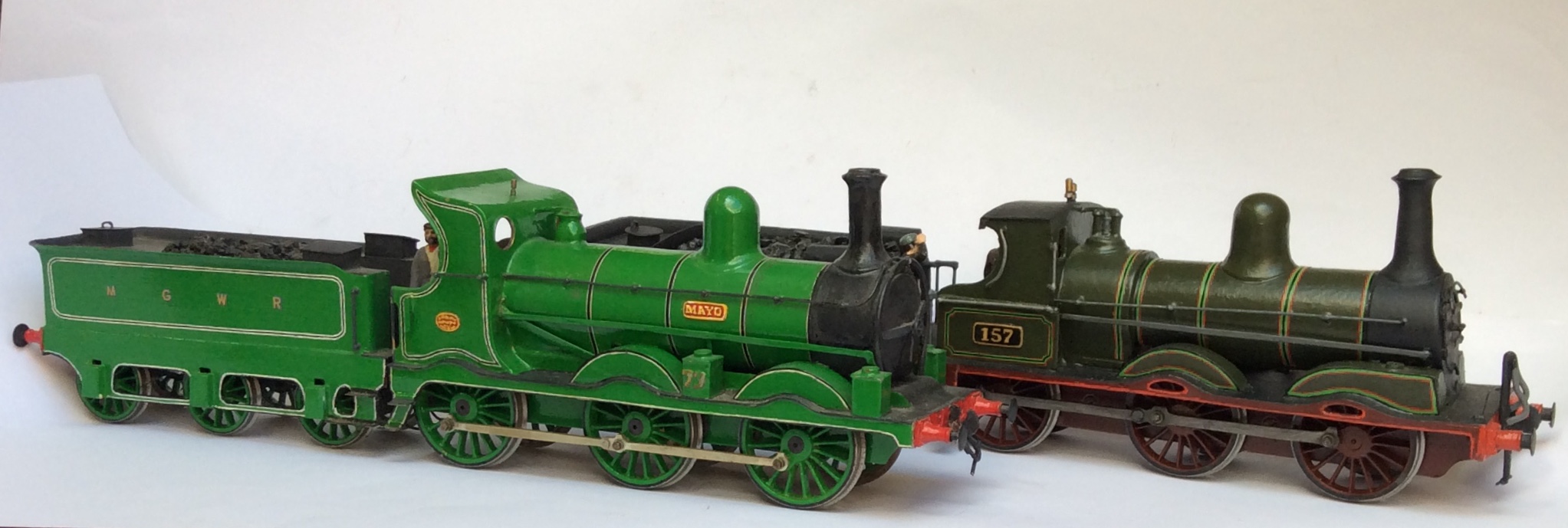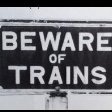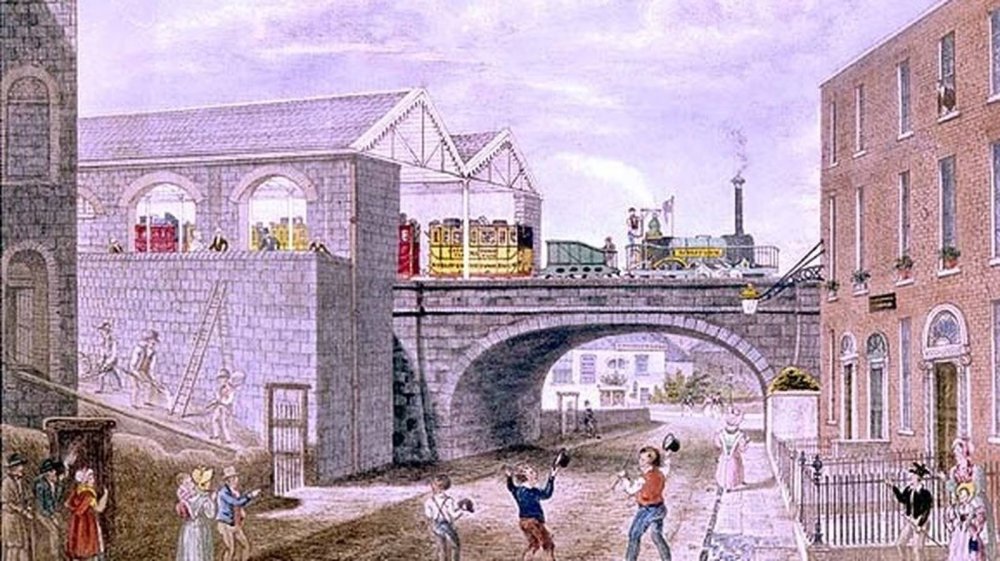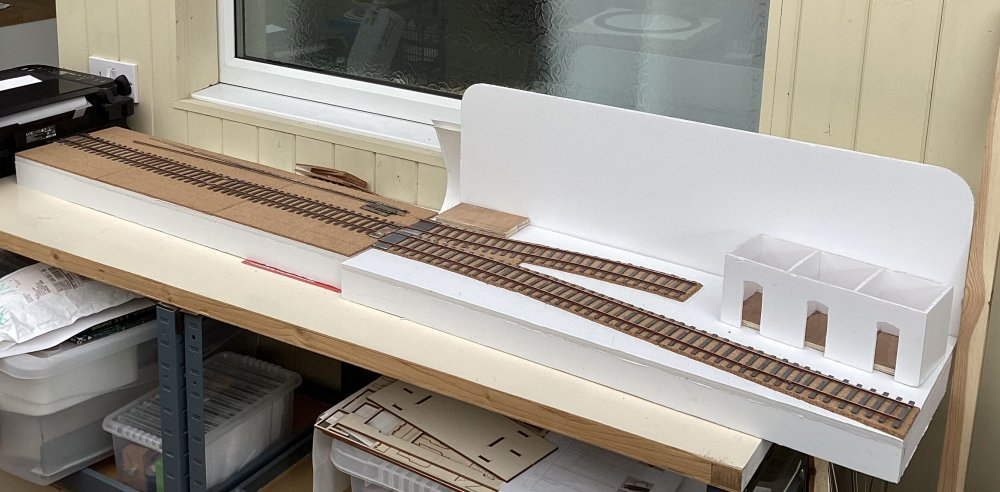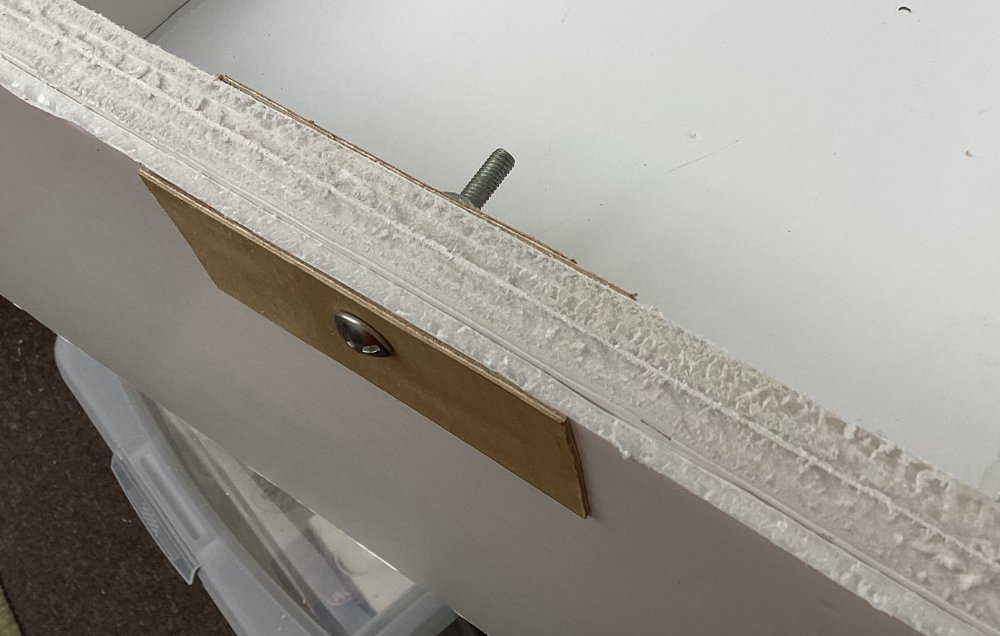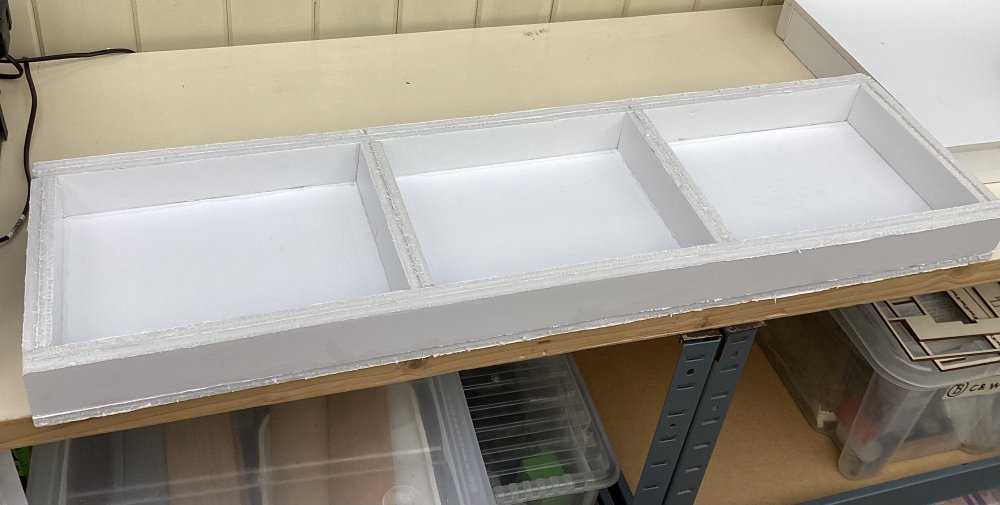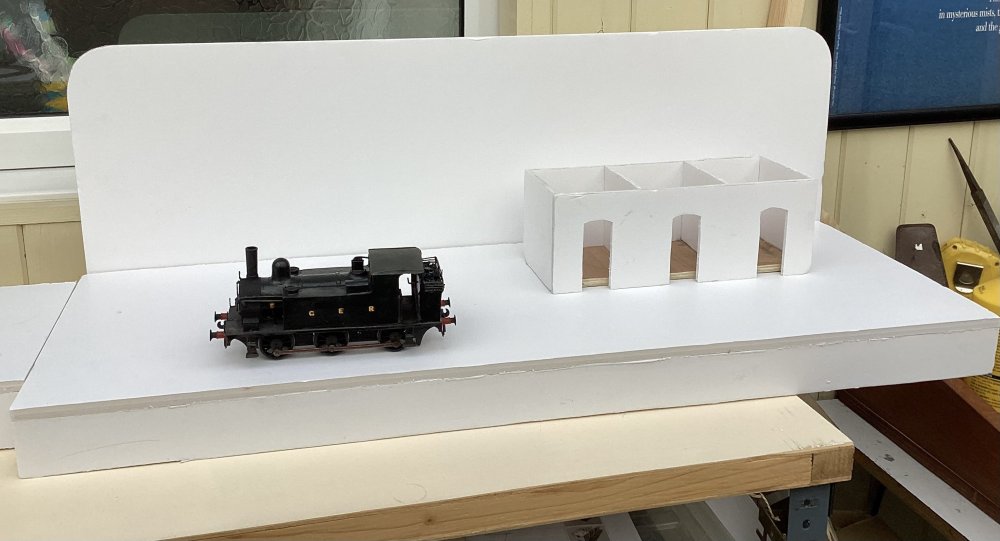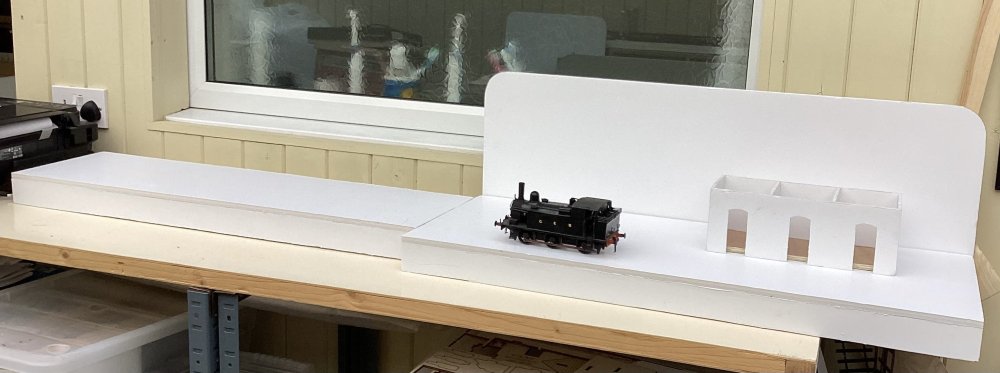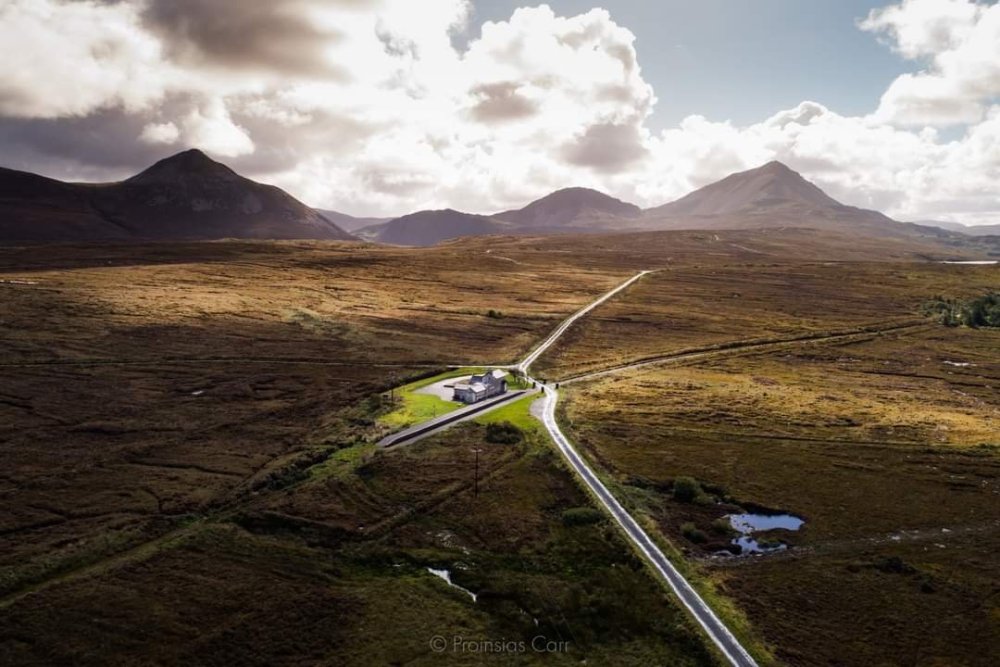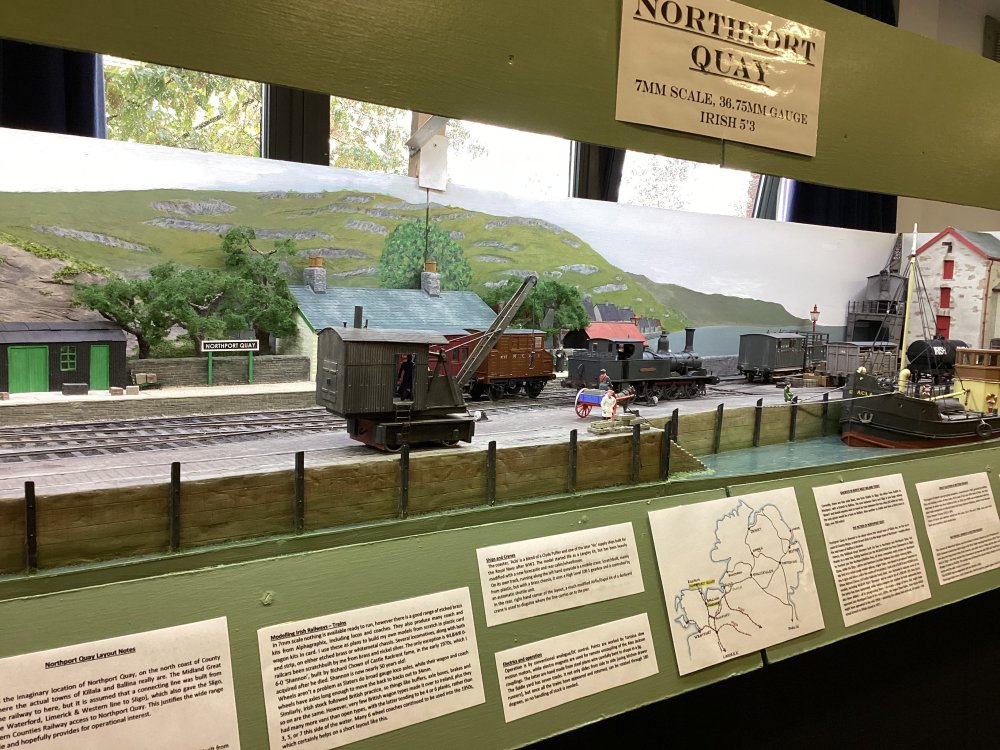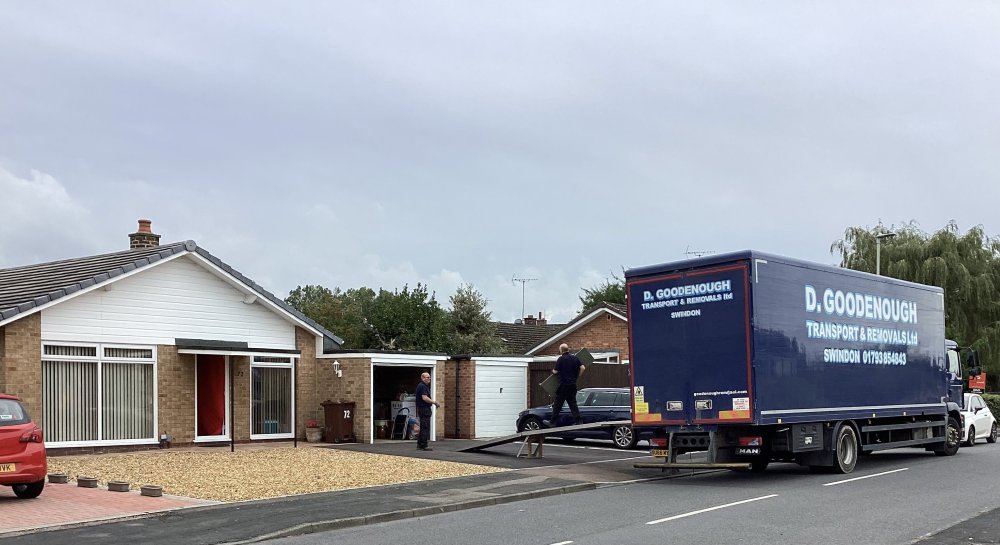-
Posts
323 -
Joined
-
Last visited
-
Days Won
2
Content Type
Profiles
Forums
Events
Gallery
Blogs
Store
Community Map
Everything posted by Northroader
-
-
Really good bit of craftsmanship there, they’re enough of a fiddle with the smallness of the parts without the need to get smooth movement on them as well.
-
The cranks are set at 90 degrees so that as the side rods on the one side are at front or back dead centre, t’other side is exerting the full torque to turn the wheels, but I fancy you know this already. If the angle is less than 90 degrees, the effort will be diminished as the wheels rotate, but you should still be getting some torque all the time. If the angle gets too low, the rods will bind up. So, I would think try fitting the motor and see what happens. You might get a little hitch on each revolution rather than a smooth turning which will become annoying and you’ll want to rework the job, maybe they will turn well enough to leave it. Good luck with it. In the past using slaters axles I’ve put the largest diameter drivers I’ve got on the axle and scribed a mark on the tip of the tyre in line with the crank pin, then lined up by eye looking across the wheels, but I’m not sure if this would work how you’re doing it.
-
I hope you’ll keep the small tower (belfry?) on the side. The mock-up loses a lot without it.
-
I expect Mr. Woodman was thinking “Nihil illegit carborundum”.
-
It’s slowly coming together, but for now I’m still paying expenses on two houses, so outgoings on modelling are very limited. The boards are using two A1 sheets of 10mm foamboard, which determines a length for each at 33”, with a backscene support of 5mm foamboard. The track is nearly ready to lay, and you’ll be glad to hear it’s set at 37mm. or thereabouts. Good to hear you fancy mixing goods and passenger. Don’t worry about the station building that’s roughed out, that’s for a Portuguese fancy, I’m swotting up on JB’ s useful thread on GNRI buildings.
- 77 replies
-
- 11
-

-
Off to a flying start, looks very promising.
-
Looking back on “New Irish Lines” archive tonight, I see Mr. Alan Gee did a series of articles on modelling the LLSR about ten years ago, including outside frames, but to a 4mm scale.
-
What I’m looking at is “Lyddlow Goods”, described in this “Despatch”. Very simple, but Jordan can spend a pleasant half hour shuffling a few wagons. https://micromodelrailwaydispatch.com/wp-content/uploads/2022/03/Issue204_finished-compressed.pdf I see you used to go to exhibitions with a version of “Halstead” (that’s what I take it to be?) much the same but with a kickback siding added. https://www.westernthunder.co.uk/threads/halstead.12154/
-
I fancy the rails will be a bit too wide for the wheels on that one.
-
This small layout that’s been threatened is starting to take shape, beginning with a new baseboard, as all the old stuff went to the council tip before the move. Rather than doing it in 2x1 and chipboard, I thought I’d try foamboard this time, so I ordered a pack of 10mm thick foamboard, A1 paper size.(That’s 33.1” x 23.4”, or 840mm x 594mm) I only used two sheets for this job, so it’s quite competitive with using timber, though not so durable of course. I cut a strip 12” wide lengthwise off a sheet to give me the top for the main board, then the rest of the board went in six 48mm wide strips. These were glued together in pairs, using PVA Bond, and used for the reinforcing runners under the top. The other board gave me a 9” wide top for a three road fiddle yard, and the rest of the reinforcing strips. Here’s the two together, with a 7mm 0-6-0T and a small station building roughed out to give an idea of how it will look. Theres a 5mm thick foamboard to act as a backscene support. Obviously you can’t screw, nail, or use track pins, everything needs gluing, but the back sheet is bolted on, using 2mm thick ply pads glued on the outer faces. The two boards are just resting loose on a “tabletop”, an old door made narrow. The rail tracks will register across the join between the two boards, but the boards will stay loose, as I am treating the fiddle board as a single large cassette.
-
I’ve only done two outside frame locos, one scratchbuilt and one a kit, and they were standard gauge using Slaters wheels. They had inside main frames, and dummy outside frames with loose axle boxes. The one thing with both of them was this arrangement seemed to take away any side play, and as they were six coupled they wanted to go In straight lines only. I managed to sort out the scratchbuilt one, so all it needs now is a superstructure, but the kit one needs new inside frames, which I keep putting off. This sideplay allowance is something to watch out for. if you do get into using Slaters wheels, the ones for outside frames have the wheels fitted on a taper on the axle, once they’re on it, they don’t want to come off, and this affects how you plan the assembly, so it’s best to check the frame bush alignment with dummy axles and the side rods, then sort out motor and gearbox mounting as the wheels go on the axle for the first (and only) time. Good luck with how you sort out the availability of suitable wheels and axles, and how you do the quartering for the outside cranks. You look to be a better craftsman than me, and I’ll enjoy seeing how you do it. I see you’re reusing Fintonagh, I’ve always admired the grouping of buildings on that, with a Swilly station it could be a bit simpler?
-
“Ahh, well, if I was goin’ there, I wouldn’t start from here at all, sorr…”
-
That’s great to see, Leslie, nice to know they’re finding good homes. I expect there’ll be some tweaking needed, wheels to polish, couplings to fiddle with, paint jobs to finish, and hope the models all behave, but we couldn’t have a better outcome. Breaking News: “Provincial Models goes into 7mm”!!
-
Good to hear from you, Alan, thanks for your best wishes, and hope you’re not too bogged down with your job to get some modelling time in.
-
Thanks, David. Mind, the line will be “dual purpose” https://www.rmweb.co.uk/topic/151308-“beyond-dover”/page/31/#comment-5323321
-
Glad to hear: a) it was displayed at the Dublin show, and folks enjoyed it. b) Ken’s got it, but did you tell him it’s 32mm gauge? Following on from reading the two Dave’s exploits on here, Arigna Town, Belmullet, Northport Quay, Rosses Point, Abohill halt, and seeing some of them in action, I convinced Ballycombe will have be sort of 36 and a bit mm gauge as it reappears. Good luck, Ken, that 3D print looks very tasty.
-
Er, track standards… when you was doing Abohill halt, say, what was the sleeper sizes and spacing you used? Just askin’ for a friend.
-
So today was a trip out, to Uckfield in East Sussex. The model railway club there have a reputation for organising outstanding thought out range of layouts, and so it is this weekend. A star attraction for me was Northport Quay, David Holmans line, and seeing it in the solid was most enjoyable.
- 149 replies
-
- 10
-

-

-
Really neat job, I’ve had several goes at doing coach bodies that way, and never managed to get them looking that good. Still, keep on trying, eh?
-
It’s nice thought, a station with one of those stone huts roofed in turf by the lake, but we’ll have to have one of the GNR brick jobs. I’ll be sticking with the brand name “Ballycombe”, although it’s been pointed out to me that “Combe” doesn’t have Irish roots. It come about way back when I was in need of an Irish name for the line, and my wife was saying “Ballylongtime”, as it was slow coming together. We were out walking the South West Coast Path in Cornwall, approaching Watergate, just east of Newquay, with a load of activity on the beach, all folks in pastel shade Edwardian costume, with plenty of horses, and a banner up, “Ballycombe Beach Races”. “Bingo”, I says to myself, “never mind Laytown”. All round the Watergate Hotel there were these big trailers, cables off everywhere, a film crew hard at it. It turns out later they were filming something for American TV called the “Magical Legend of the Leprechauns”, but I’d made the station boards by then.
-
well, here we are downsizing to the new place. A couple of weeks before the move, himself, galteemore, was in for a dish of tay, as he’d just moved as well, a real treat for me. I haven’t moved so often as him, and not so well organised in setting up the workplace, but it’s coming along. Now we’re here I can think about what can be done, but it’s going to be small, that’s for sure, a couple of those six wheelers and a tank engine to pull them off stage, with a siding for a wagon or two, nine bean rows, and a hive for the honeybee.
-
That’s a beautiful layout, looks really good.
-
Thanks, Leslie, so what are we looking at here? I’ve done three 0-4-4T locos besides this one, and I’ve found that you need to allow the rear bogie to traverse sideways across the loco, besides just pivoting centrally, because the leading drivers are fixed to the superstructure. On a curve this displaces the rear end of the loco sideways by a fair amount, and so the pin the bogie turns on works in a slot across the bogie frame. The first batch of the GSWR 0-4-4T were originally built as Fairlie engines, with the driving wheels mounted on a bogie, as well as the carrying wheels at the back end, so the whole lot worked very like a modern Bo-Bo diesel. Later versions were built without the driving wheel bogie, I suppose because of the trouble with having flexible steam pipe joints, The trouble is in a model, this particular class does have quite an appreciable distance between the front and back sets of wheels, and you do encounter sharper curves, so you do need a bit of flexibility. To do this, the Driving wheel sets are mounted on a frame as well, with a central stretcher with a hole for a pivot screw which attaches the frame to the superstructure. The motor is mounted on the back axle, and points backwards so as to clear the central pivot. The motor fits inside the firebox, with a small amount of clearance on each side, so it can wag from side to side a bit. (If the engine had full side tanks it would be much better for the clearances) There’s a brass block at the leading end of the frame to help balance the motor overhang. Then the rear bogie has a full slot across the middle stretcher for the pivot pin to traverse across the full width. There’s pickups on all the wheels, though I see the wheels are starting to get a bit rusty. That’s the trouble with Slaters wheels, they do the tyres in mild steel to keep costs down, fair enough, but on a loco which has been around some time, you have to go round with some emery.
-
Everton FC have recently opened a souvenir shop in the glitzy new shopping centre called Liverpool One. After some consideration, they’ve called it Everton 2. Now any post they get is addressed to Everton 2, Liverpool 1.
.png.c363cdf5c3fb7955cd92a55eb6dbbae0.png)
